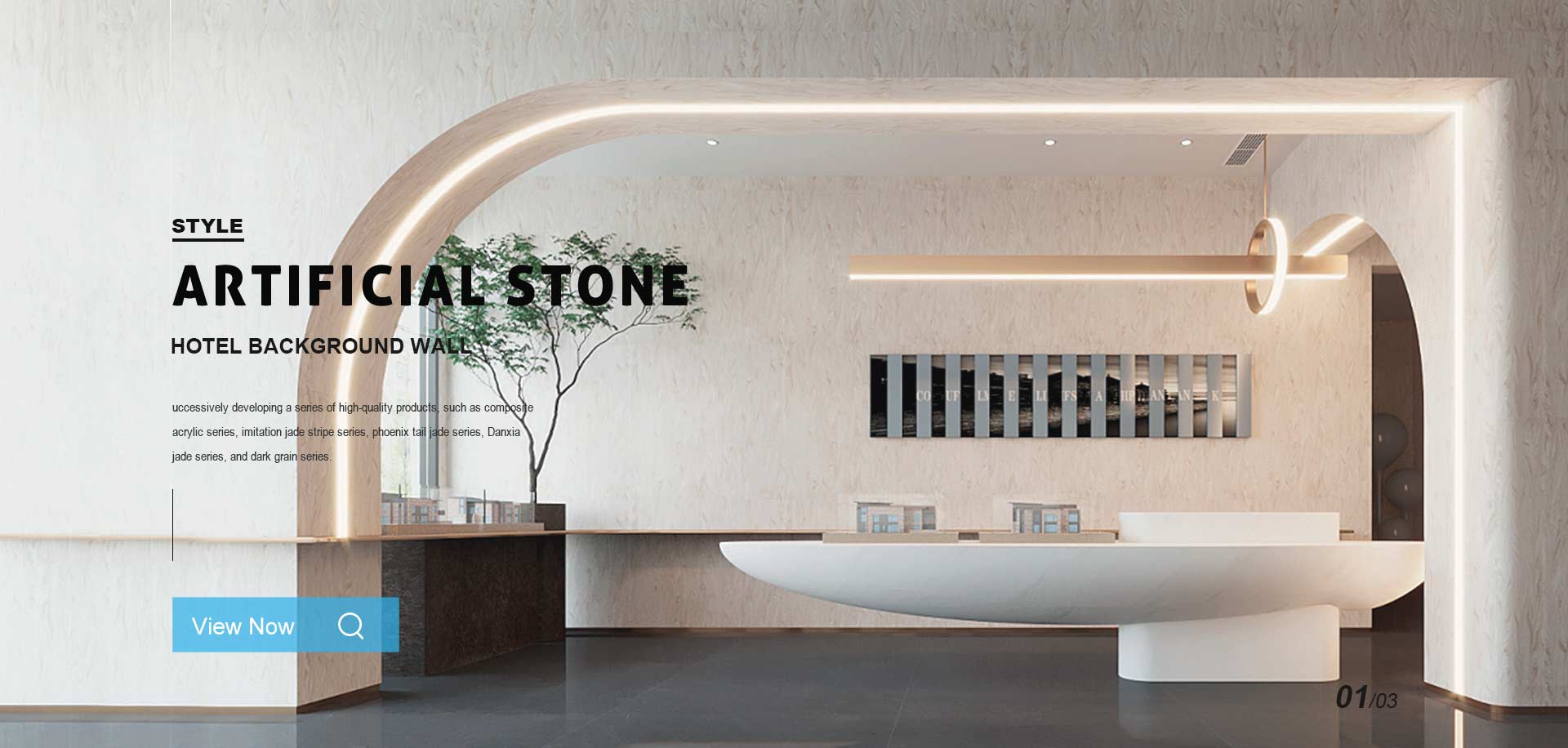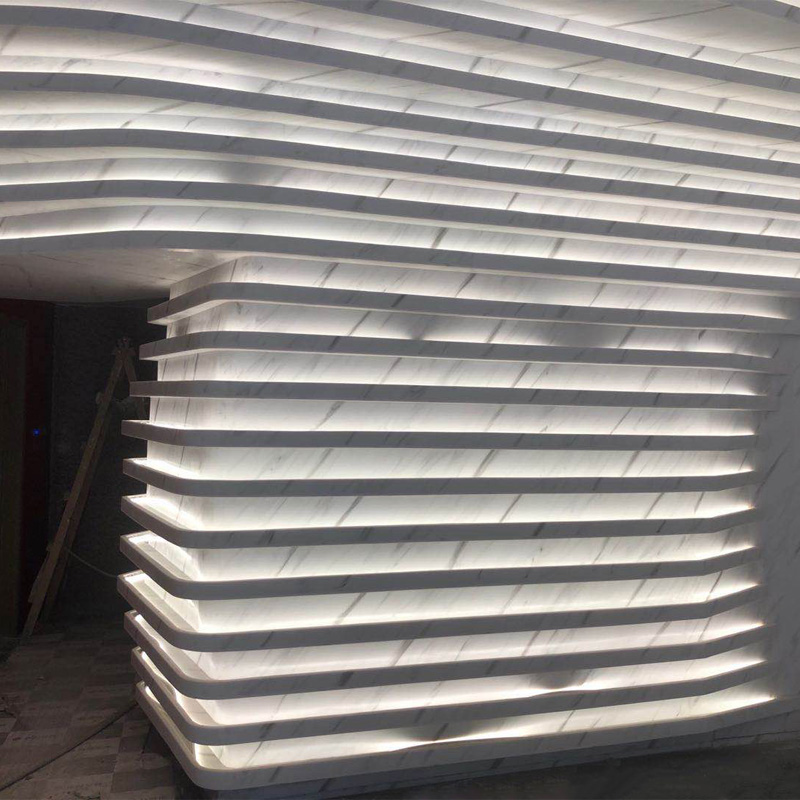
As awareness of environmental conservation grows, the demand for sustainable building materials has skyrocketed. Among the popular choices in eco-friendly construction, Solid Surface wall panels stand out due to their versatility, durability, and environmental benefits. Made from a combination of natural minerals and eco-friendly resins, these wall panels offer a modern aesthetic while minimizing environmental impact. This article explores the eco-friendly and sustainable aspects of Solid Surface wall panels, including the use of recyclable components, reduced resource consumption, and their positive impact on the environment.

One of the most significant environmental benefits of Solid Surface wall panels is the use of recyclable materials. Many manufacturers design these panels with sustainability in mind by incorporating recycled minerals and other eco-friendly components. Often, post-industrial and post-consumer recycled materials are integrated into the production process, reducing the need for virgin resources. This minimizes the waste generated during production and contributes to a circular economy, where resources are reused rather than discarded.
The recyclability of solid surface wall panels doesn’t end with the manufacturing process. At the end of their lifecycle, these panels can often be reclaimed, reprocessed, and used in new products, further reducing waste and promoting a sustainable cycle.
Durability is a hallmark of solid surface wall panels, and it plays a vital role in their sustainability. These panels are resistant to scratches, stains, moisture, and impact, making them ideal for high-traffic areas like hotels, hospitals, and commercial spaces. Their resilience means they don’t need to be replaced as frequently as other wall materials, such as paint or wallpaper, which can chip, peel, or degrade over time. By extending the life of a wall covering, Solid Surface Panels reduce the need for replacement materials, lowering overall resource consumption and waste.
Fewer replacements also mean reduced transportation, packaging, and installation requirements, which contribute to a smaller carbon footprint over the life of the building. The long-lasting nature of these panels supports sustainable building practices and helps minimize the environmental impact of maintenance and renovations.
Compared to traditional building materials, solid surface wall panels often have a lower environmental impact during production. The energy-efficient manufacturing processes used to create these panels help reduce carbon emissions. Many manufacturers employ closed-loop production systems, which recycle water, reduce emissions, and ensure minimal waste.
Additionally, some companies utilize renewable energy sources, like solar and wind power, to fuel their production facilities, further lowering the carbon footprint associated with manufacturing. These energy-conscious practices contribute to a cleaner, greener production process that aligns with the principles of sustainable development.
Solid surface wall panels are made with non-toxic resins, free of harmful chemicals like volatile organic compounds (VOCs) and formaldehyde. VOCs, commonly found in many building materials, contribute to indoor air pollution and have been linked to respiratory issues and other health problems. By using low-VOC or VOC-free materials, solid surface wall panels help create healthier indoor environments that are especially beneficial in spaces like hospitals, schools, and homes.
Additionally, the low-emission properties of solid surface panels mean they comply with strict indoor air quality standards. Certifications such as GREENGUARD and LEED ensure that products meet environmentally friendly criteria, making them a safe choice for eco-conscious consumers and builders alike.
Solid surface wall panels are highly resource-efficient, meaning they require fewer natural resources to produce compared to some other wall materials, like natural stone or traditional ceramics. This efficiency is due to the combination of natural minerals and engineered resins, which are precisely formulated to create a durable, high-quality product with minimal raw material input.
Manufacturers also design these panels with minimal waste in mind, optimizing the shapes and sizes during production to reduce material offcuts. This “less is more” approach helps conserve resources and minimizes the overall ecological footprint of solid surface wall panels.
Unlike traditional wall materials that require regular painting, sealing, or specific chemical cleaning agents, solid surface wall panels are incredibly low-maintenance. They are non-porous, meaning they don’t absorb stains or harbor bacteria, which makes them easy to clean with simple soap and water.
The reduced need for harsh chemicals not only minimizes the health risks associated with chemical exposure but also contributes to a lower environmental impact by reducing toxic runoff into water systems. These panels maintain their appearance and structural integrity without the need for environmentally harmful cleaning agents, making them an eco-friendly choice for both residential and commercial spaces.
Solid surface wall panels can offer thermal insulation and soundproofing benefits that contribute to energy efficiency in buildings. By reducing the need for artificial heating and cooling, these panels help lower energy consumption, leading to a reduction in greenhouse gas emissions. The panels’ insulating properties can also reduce noise pollution, creating a more pleasant environment, particularly in commercial and public spaces.
The energy savings from improved insulation and acoustic management contribute to a more sustainable, energy-efficient building over the long term, aligning with the green building standards that are becoming increasingly popular in modern architecture.
Many solid surface wall panels are certified by organizations that promote sustainable building materials, such as LEED, GREENGUARD, and ISO 14001. These certifications provide third-party validation of a product’s eco-friendly qualities, giving architects, designers, and consumers confidence in their choice of materials. By adhering to these standards, manufacturers demonstrate their commitment to reducing environmental impact, supporting responsible sourcing, and implementing eco-friendly practices.
Such certifications also enable architects and designers to include these panels in sustainable building projects that aim for certification under green building standards. This supports a holistic approach to eco-friendly construction, where each element contributes to the overall sustainability of the structure.
Solid surface wall panels are more than just an aesthetically pleasing building material; they embody a commitment to sustainability and environmental stewardship. From their recyclable components to the low-impact manufacturing processes, solid surface wall panels provide a greener alternative for builders, designers, and homeowners. Their durability reduces the need for frequent replacements, while non-toxic components and easy maintenance minimize health risks and environmental impact.
Incorporating solid surface wall panels into interior design and architecture allows for a balance between style, function, and sustainability. As the demand for eco-friendly materials continues to grow, these panels represent a forward-thinking choice that aligns with the principles of sustainable development, helping to create healthier spaces and a cleaner planet.